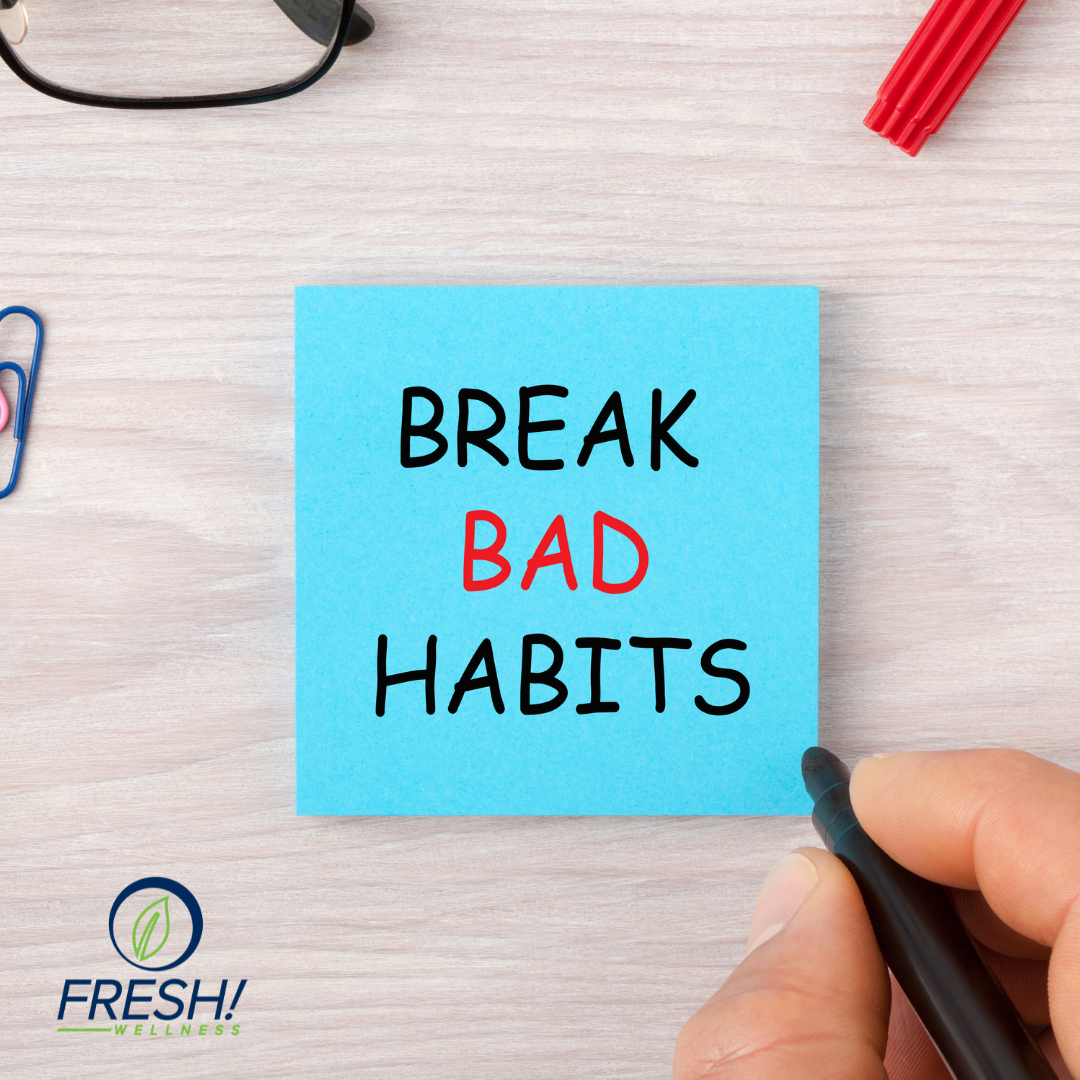 Let’s face it, we all have slipped into some less than desirable habits during the pandemic.
Let’s face it, we all have slipped into some less than desirable habits during the pandemic.
However, I try to avoid labeling habits as “good” or “bad” when they are simply our response to a given situation.
It seems that unproductive habits are easy to create, particularly during stressful and challenging times. The great news is that healthy, productive, and high performing habits are just as easy to create when we understand how habits work, and use that process to our advantage!
Here are three simple ways to break those “bad” (unwanted) habits and create new positive ones that will benefit your health, happiness, and performance
- Understand the impact & benefits
- Create a plan
- Take consistent action
While this may seem overly simple, there are some key parts of each step that often get missed. This article will help you nail each step and make the habit development process much more clear
Sometimes we aren’t even aware of the habits we’ve picked up, so awareness is the first step in any change process.
Usually we first become aware of the negative implications our habit is producing. This could be seen through an increase in stress, poor work or relationship outcomes, and poor health or wellbeing.
By clearly understanding the impact our habits are having on our life, we can better connect with the desire for change. I’ve often said that people don’t change until the “pain” of the status quo becomes great enough.
Tapping into this “pain” is only one part. The flip side of this introspection is to clearly see the benefits that change provides to you. How will your life be better when you successfully make these changes? What specifically will improve? What benefits will you (and others) see because of this change?
Habit Loop
Another, and arguably more important, aspect to consider is what need this undesirable habit was filling in your life. This may sound silly, but the science behind the habit loop is quite simple.
- A cue is noticed
- A response/action is taken
- A reward is generated
Habits are developed for a reason. Perhaps a notification pops up on your phone (CUE), and you begin doom scrolling social media (RESPONSE), because subconsciously (or consciously) you are avoiding dealing with the stress you are experiencing (REWARD).
This is just one example, but when we analyze almost every habitual response, we will see this habit loop at play.
Once we know the impact this habit is having and the reason for its existence, it’s much easier to change the habit. In fact, many times, we simply need to change our environment to reduce the likelihood of the cue, or change our response in a way that still provides us the reward our brain is used to.
In the example above, it could be something as simple as turning off social media notifications, limiting our time to 5 minutes on that app, or consciously choosing to do something more helpful to manage our stress (i.e. walking, exercising, meditating, etc.).
Writing down goals
It’s often helpful to create and write down a success plan in the form of SMARTER (Specific, measurable,etc..) goals. When goals are written down the process of habit change becomes a much more tactical, organized process. This helps prevent the feeling of burnout and hopelessness. Plus, having a habits and/or goals list that is clearly visible and easy to reflect upon helps remind you of the daily steps and actions that need to happen to find success.
Physically writing down your goals creates a much greater positive impact on your subconscious, motivation levels, and eventual outcomes. According to a Forbes article, if you actually want to achieve goals, you need to write them down to create a type of mental tunnel vision, which devotes you to the goal (2018). When goals are written down step by step, it helps narrow down the process and causes you to hyper focus on making changes.
By now you’ve done some introspection and figured out the impact of your current habits as well as clearly seeing the future benefits of changing those habits. You also have written down a few SMARTER goals related to your desired change.
Taking action
The final step is to take action on those objectives. This is where “the rubber hits the road” and the often challenging work of change happens. The great news is that when we have strong, compelling goals that motivate us, and we can see the benefits of our future position, the process is much more enjoyable and effective. This process of change is essential to building mental strength, resilience, and grit.
In fact, the amazing power of creating positive habits in our life is that the change process helps us create the success framework of mindfulness, perseverance, confidence, and capability that benefits every other part of our lives.
How are you using the habit loop in your life to create the future you desire? Comment and let me know!
Think, Move, and Be Well
CEO
FRESH! Wellness Group
P.S. Would you benefit from coaching to transform the success habits in your life? Just DM me on LinkedIn and we will set up a time to connect.
